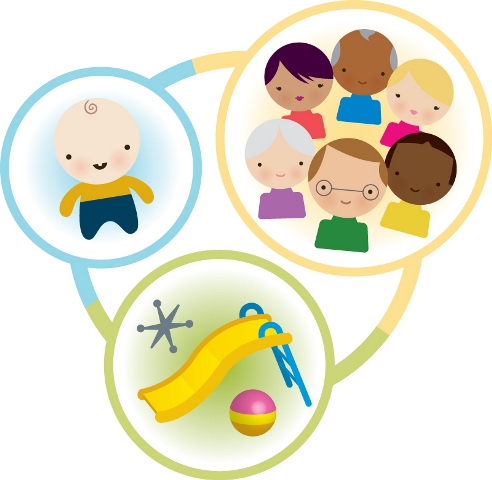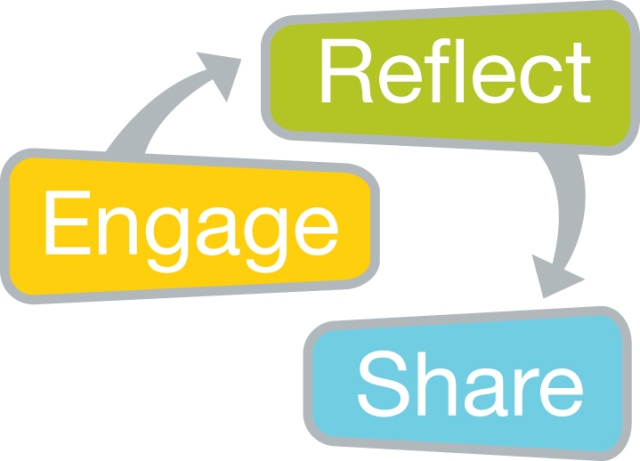 Collecting information about community assets will help coalitions to better understand how well their communities support early development and will contribute to important research.
Collecting information about community assets will help coalitions to better understand how well their communities support early development and will contribute to important research.
Young children's development is influenced by the communities in which they are raised. Understanding the impact of community on early development can:
 provide important insights into early development results (specifically the Early Development Instrument or EDI that is used to measure the development of kindergarten children),
provide important insights into early development results (specifically the Early Development Instrument or EDI that is used to measure the development of kindergarten children),- identify strengths and gaps in environments, supports and services,
- help communities — and decision-makers and policy-makers at all levels — to respond effectively to local needs,
- and advance research about the relationship between community environments and child development.
Communities are the researchers
Communities know their local environments best. They are in the best position to list and analyze the things in their community that are affecting their young children’s development, positively and negatively. Communities collected this information by working through their local early childhood development (ECD) coalitions. By the spring of 2014, coalitions had identified more than 23,100 resources in their communities. These were incorporated and mapped in the LiveAtlas.
Identifying community resources
ECMap developed a framework to guide coalitions through this research process.
Questions
Begin with these questions:
- What influences early development in our community?
- What are the positive influences?
- What are the negative influences?
- What would we like to see in our community that could improve or better support early development?
Note: community influences can be positive or negative. ECD community assets are things in the community that positively influence development and are valued by community members.
Categories
Keep these three categories in mind when you are looking at the things in your community that influence early development:
- community features: natural (parks, forest, rivers and hills) or built (such as recreation centres, libraries, places of worship, walkways and playgrounds),
- community characteristics: community qualities related to human activities, such as social and economic circumstances, population density, industrial activity, social cohesion (unity and respect for difference) and the histories and cultures of your community, and
- community resources: services, programs, people, organizations and activities that affect or may have the potential to affect child development.
Steps
 There are three basic steps in the community consultation process.
There are three basic steps in the community consultation process.
Engage
- Engage the community in tackling the research questions.
- Create a list of the people in your community who have a direct or indirect influence on early development.
- Contact as many of the people on the list as you can. Invite them to consider the four questions through big groups, small groups, one-on-one interviews, over the phone, by e-mail or other ways.
- Keep notes of your discussions and findings.
- Ask your ECMap community development coordinator for help or ideas (see contact list).
Reflect
Reflect on what you have heard from the community. Invite the people that you have consulted with to join you if possible.
- What things in our community influence early development?
- What are our community assets (things that affect early development positively)?
- What things have the potential to become community assets?
- What are the creative ideas that we see emerging?
Share
Share your findings with your community and consider how the resources in your community - or the lack of resources - impact the Early Development Instrument (EDI) results in your community and the overall well-being of young children and families.
Additional information
ECMap
An in-depth tool kit, Discover your early childhood development (ECD) community assets: A tool kit for coalitions in Alberta, is available to help coalitions to gather information about their community assets. Download a PDF copy.
A four-page information sheet, Discovering your early childhood development community assets, outlines the basic process. Download a PDF copy.
Other sources
The links below offer a wealth of inspiration. You can learn more about how other communities have identified their community assets and translated their knowledge and connections into action.
Tamarack – An Institute for Community Engagement is a not-for-profit, Ontario-based organization (http://tamarackcommunity.ca/index.php). Visit their Asset Building resources page to help you get started (http://tamarackcommunity.ca/g3s22.html).
The Coady International Institute is based at St. Francis Xavier University in Antigonish, Nova Scotia. A 22-minute film, By Their Own Hands, profiles how community assets have been crucial to making community-driven change in the small Nova Scotia community of St. Andrews (http://www.coady.stfx.ca/themes/abcd/publications/by_their_own_hands/).
The University of Kansas Working Group for Community Health and Development has developed a fine resource, The Community Tool Box (http://ctb.ku.edu/en/default.aspx).
The tool box contains great ideas for engaging your community in a discussion on community assets, including a wide range of consultation methods you might want to try! Other good resources are Assessing Community Needs and Resources ( http://ctb.ku.edu/en/tablecontents/chapter_1003.aspx) and Group Facilitation and Problem Solving (http://ctb.ku.edu/en/tablecontents/chapter_1016.aspx).
The Asset-based Community Development Institute is based at Northwestern University School of Education and Social Policy in Evanston, Illiniois, USA (http://www.abcdinstitute.org/).
The institute shares lots of resources on community assets, from worksheets to use with your coalition and community members to a board game that helps identify possibilities and potential in negative situations. Check out this collection of tools for working through the asset process: ABCD Toolkit (http://www.abcdinstitute.org/toolkit/). Download readings on how others have approached community asset processes (http://www.abcdinstitute.org/publications/downloadable/).
Community Building Resources is located in Spruce Grove/Devon, Alberta (http://www.cbr-aimhigh.com/index.htm). Their resource page has a list of invaluable books and websites, which focus on building community by exploring assets (http://www.cbr-aimhigh.com/Resources and Links/resources_and_links.html).
